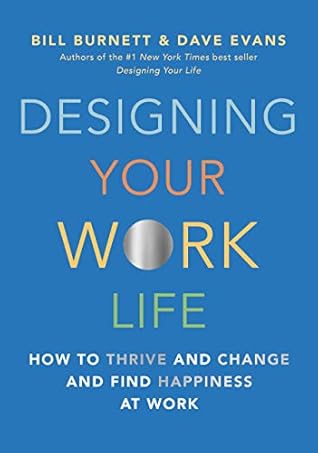More on this book
Community
Kindle Notes & Highlights
by
Bill Burnett
Started reading
January 26, 2021
The mind-sets are: curiosity, bias to action, reframing, awareness, radical collaboration, and—the bonus—storytelling.
There’s an old expression, “A problem well defined is half solved,” and reframing will make sure that you define the right problems to work on.
When you reach out to the world, it’s been our experience that the world reaches back. And that changes everything.
highly immersive stories can change attitudes, opinions, and behaviors.”
people who are happy are enjoying what they get, not wasting their time worrying about getting something they don’t need.
What makes life meaningful and what maximizes your happiness and longevity are relationships—who you love and who loves you.
Good Time Journal: You observe and record your thoughts, emotions, and behaviors while at work, and then record what you notice about your work and your job. We have a few different categories of “noticing” that are connected to the research about what makes work “good work,” and they are: What did I learn? What did I initiate? Who did I help?
To feel like your work is working for you, the science says you have to be learning something every day. So notice every day what you learn.
In order to feel like a designer in your job, you want to be creating and initiating things, most of the time. When you take it upon yourself to initiate an action, a change, or a new way of doing something, you satisfy what psychologists call an “innate need,” and these needs are uniquely human.
doing something in the service of others had a very strong correlation to long life and happiness.
By savoring we simply mean returning to an experience or thought and reentering and re-remembering it.
Savoring will deepen the experience, secure it in your memory, and expand your understanding of why the experience was valuable. Voilà! With a few moments of investment, you got more out of life—for free! Of course, if you document your savoring reflection with a note in your journal, your chance of experiencing more meaning in your life goes way up. It’s a practice that pays off time and time again.
When it comes to problems, you want to set the bar low and clear it,
He’s boiled the process down to asking just two questions: Expert Consultant Dave Question #1: What’s going on? (Then he listens to the very long answer the client gives him, he takes a thoughtful pause, and then he asks the second question.) Expert Consultant Dave Question #2: Okay. Now, what’s really going on?
His data says that 70 percent of the problems that couples wrestle with are unsolvable. He calls these “perpetual problems.” But that is not necessarily a bad thing. His conclusion is that the couples that stay together for life, what he calls “Master Couples,” accept that many of their problems are like this and develop workarounds. They do not let these problems end up destroying their happiness. They seek a “good enough” resolution of these perpetual problems and move on.
It turns out that lots of problems, even after being well reframed, are difficult if not impossible to fully understand. But in most cases you have only a finite number of viable alternatives, so you don’t need to “understand” your problem, in all its existential glory, you just need to know enough to pick from among the doable options. BDO, not BTO
“Satisficing is a decision-making strategy or cognitive heuristic [a formula for making a decision] that entails searching through the available alternatives until an acceptability threshold is met.”
Only people with a growth mind-set paid close attention to information that could stretch their knowledge.
Every time you find yourself in a fixed mind-set, notice the story you’re telling, reframe, and tell a better story. For instance, instead of “I’m dumb,” how about this story: “I’m really struggling with this problem and I need some new ideas. I could seek out a new problem-solving strategy (get curious), I could ask for help (radical collaboration), and I could give myself more time and work harder on the basics I’m going to need before I tackle this problem.”
What can I learn today? Can I reframe the challenges of my to-do list around the objectives of learning and growth? And can I use what I learn in the service of others—can I be a teacher today?
innate psychological needs for Autonomy, Relatedness, and Competence (ARC).
humans will do things because they are just interesting.
Autonomy, at its most basic, is the need to control our own life. It’s a human drive and an innate psychological need.
Increasing your relatedness will increase your happiness—at work and in life.


